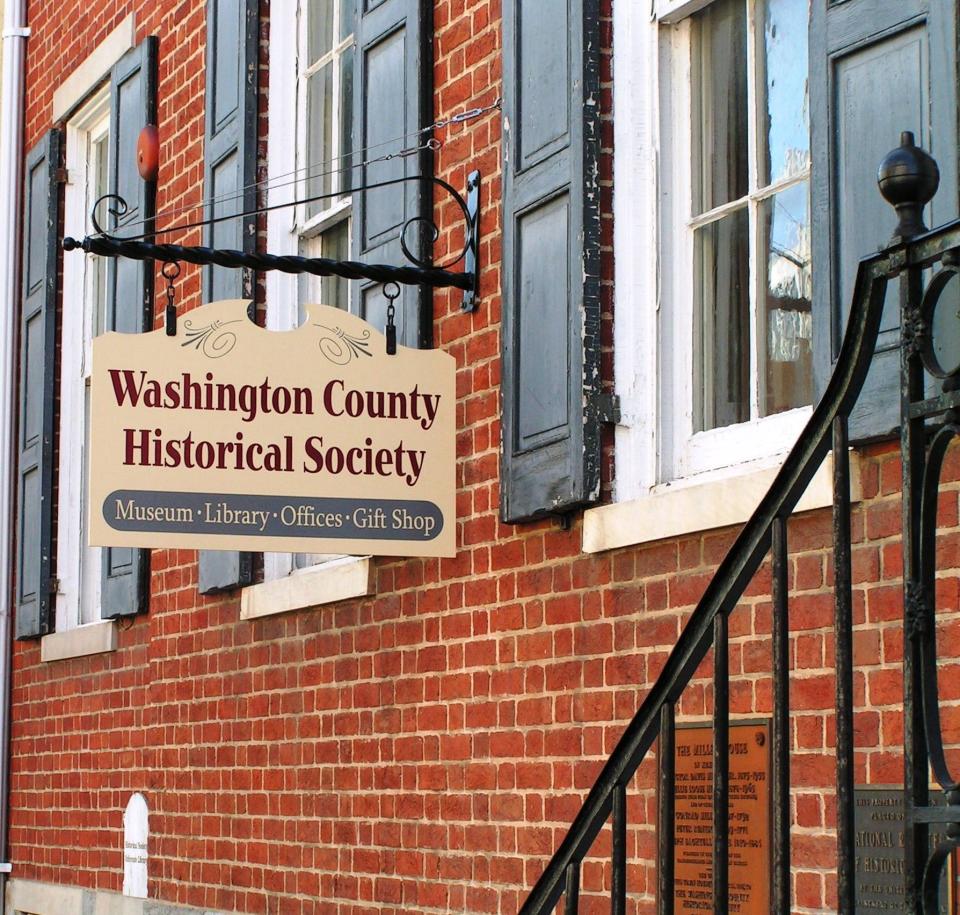The curious case of the gravestone in the basement
Tucked away in a corner of the Miller House’s basement lies a gray headstone.
It rests against a shelf filled with fossils, wheel bands and antique lantern frames. The inscription on the front of the stone reads “Here lies the Remains of JACOB FRIEND.”
Who was Jacob Friend, and how did his gravestone come to rest in the Miller House Museum basement?
Jacob Friend was born Sept. 18, 1738, not far from the mouth of the Conococheague Creek, and passed away on Feb. 10, 1802. He was the son of Charles Friend, considered the first permanent European settler in Washington County. In 1738, Charles settled in what is now known as Williamsport, right by the Potomac River.
Charles Friend was the brother of Israel Friend (1693-1753), the first European settler to journey through Washington County. Israel is noted as having acquired land from Native American chiefs residing in the area in 1727; he settled more permanently on the West Virginia side of the Potomac.
Don't miss:There's more than one way to cut 'cabbage' — and what you can learn might surprise you
More local history:Antietam: For 4.5 million Americans, our ugliest day signaled a first step to freedom
The area saw frequent travel by Native Americans, as well as settlers moving south along the Great Wagon Road. It wasn’t until 1787 that Otho Holland Williams, a Continental Army officer, officially laid out the town of Williamsport — nearly 49 years after Charles Friend had settled there, married, and had his son Jacob.
If you’re leaving Williamsport on Route 68 (Clear Spring Road), you will cross a small bridge over the Conococheague Creek; just past the bridge on the left sits a piece of grassy land partially enclosed by a chain link fence. Two stone markers identify the site as Charles Friend’s land, and the father and son’s resting place.
But the original marker for Jacob’s grave now resides in the Miller House basement.
Jacob’s original gravestone suffered severe damage during the Great Potomac Flood of 1936, when the Potomac reached 48.6 feet in Williamsport.
The flood washed buildings and livestock downriver. High water levels shut down the water pumps of the Potomac-Edison power plant, increasing public concern. And Jacob Friend’s gravestone sat at the heart of it, the high water sweeping over its stone face.
By 1949, the Washington County Historical Society decided that it was time to replace Jacob Friend’s deteriorating headstone. In its place, the society erected Jacob’s present marker — inscribed with his headstone's original epitaph — as well as a marker denoting Charles Friend’s tract of land.
The following couplet is inscribed on Jacob’s headstone, beneath his birth and death date:
“Reader WHOE’ER thou art
Thy life must shortly end
Prepare in time that God may be
Thine everlasting FRIEND.”
The final line of this poem is no longer visible on Jacob’s original gravestone, but its witty message hints at the personalities of those who placed it there to honor their loved one more than 220 years ago.

Take a trip to Williamsport to see the Friend family’s markers, or stop by the Miller House Museum to see the original gravestone’s final resting place.
The Miller House Museum at 135 W. Washington St. in Hagerstown is open from noon to 4 p.m. Tuesday through Saturday. Guided tours begin on the hour. Admission/tour is $7 for adults, $5 for students aged 13-17 and $3 for children aged 4-12.
This article originally appeared on The Herald-Mail: 220-year-old tombstone finds a resting place at the Miller House

